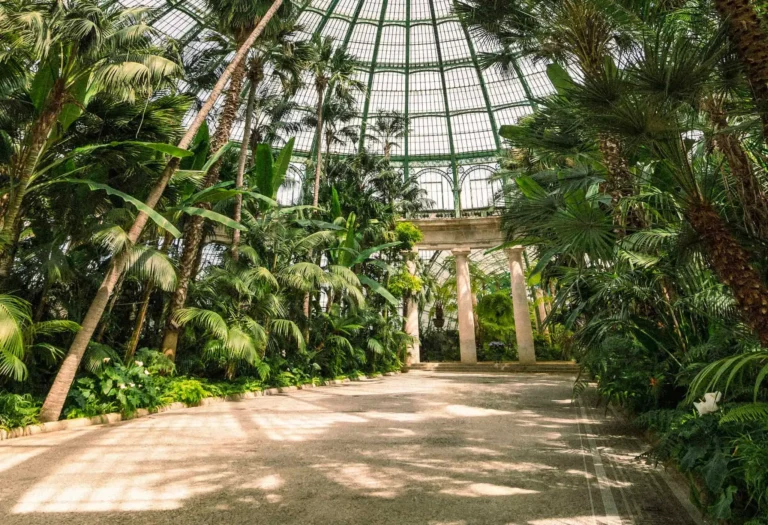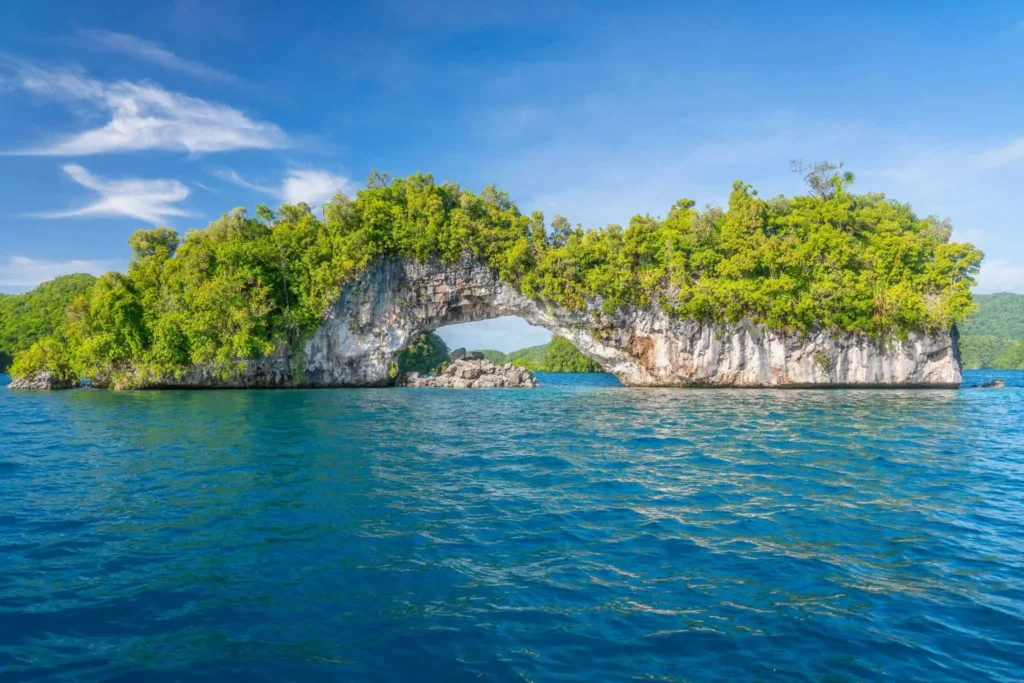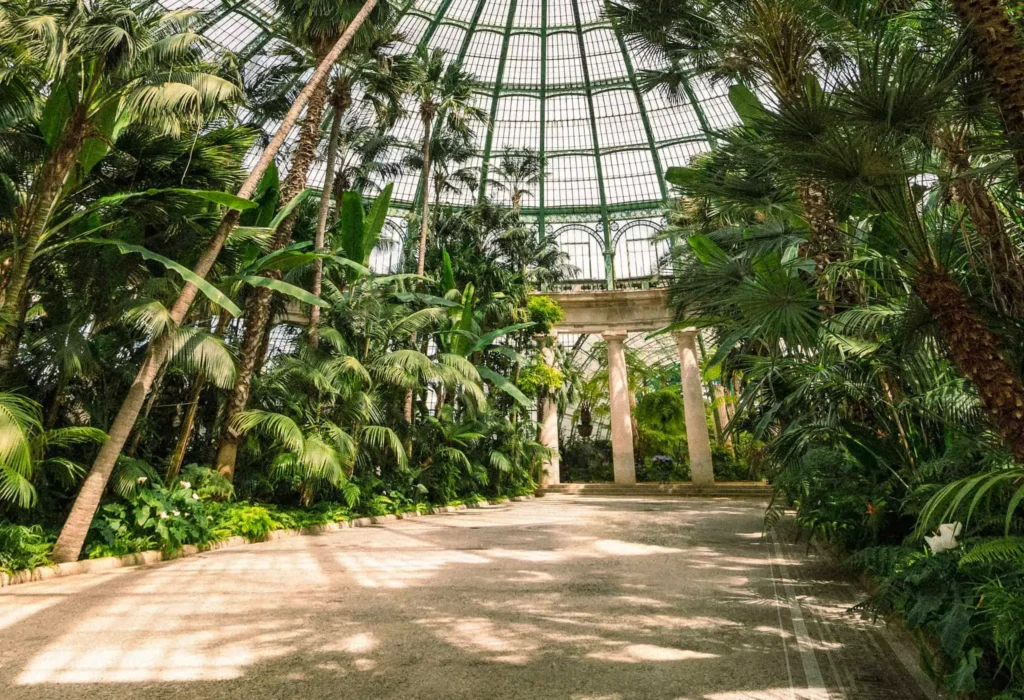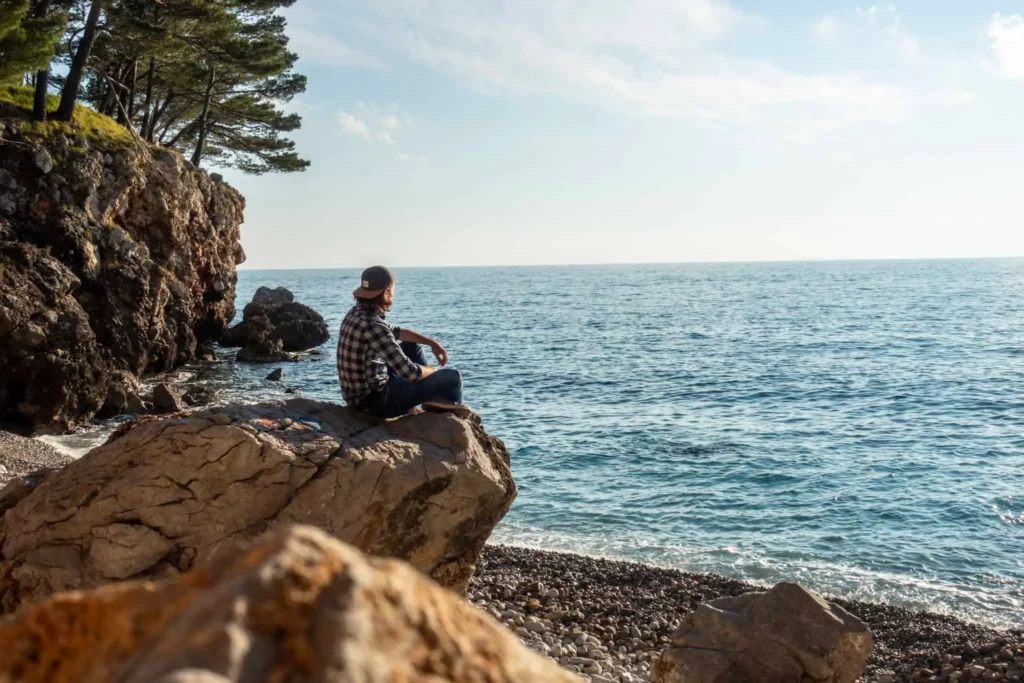| This post may contain affiliate links. Whenever you book or buy something through one of these, Giving Getaway gets a small commission, of which 100% will be donated to charity, without any extra cost to you! |
A few years ago, when I finished my master’s degree, I decided to take a one-year break from my studies to explore Eastern Europe. The plan was to stay for a month in Ukraine with friends, travel for one month in the Balkans, then go to Armenia for the rest of the year to volunteer with the European Voluntary Service. In-between I would also squeeze a visit to my family in southern Italy – since I was studying in Germany, I didn’t get to see my parents very often.
When I was planning this trip, I stared at a map of Europe on my wall for inspiration. How to combine traveling in Eastern Europe with a visit to my parents? It didn’t take long for me to see it.
After my month in Ukraine would be over, I would travel over land and sea from Ukraine to southern Italy, making many stops on the way. Now, if I were to draw a line on the map from Chernivtsi to Brindisi, what would this line cross? There you have it – the magnificent Balkan peninsula.
In this post, I describe my one-month itinerary across the Balkans from northeast to southwest, as a solo woman traveler. I made this trip during the summer (July-August, pre-COVID time) and I only used local public transport (and a little bit of hitchhiking). Needless to say, it’s a very safe area for solo women. I never felt uncomfortable or in danger – on the contrary, I had the time of my life!
1. Romania: From Suceava to Bucharest
After I spent a month in Ukraine with local friends, I set off on my own to cross the Balkan peninsula down to the Adriatic Sea, where I would take a ferry to my native Italy. The first country I visited was Romania, which I reached by bus from Ukraine. More precisely, I took a direct bus connection from Chernivtsi in Ukraine to Suceava in Romania, which only took about three hours (including border controls).
Among all the countries visited on the Balkan trip, Romania was the easiest to navigate, but also the most popular with tourists and the most expensive one (though still very cheap by Western European standards!). I crossed Romania from North to South over ten days, with stops in Suceava, Cluj-Napoca, Sighișoara, Brașov, and Bucharest.
I always moved from one city to the next by train, as the train system in Romania is quite efficient, and stayed in hostels, where I often met other travelers to hang out with. A bed in a hostel dorm was usually between €10 and €15, in the local currency, the Romanian leu.
While staying in Brașov I visited the beautiful castles of Bran (also known as the Dracula castle) and Peleș, which are a short train or bus ride away, surrounded by mountains. The medieval towns of Sighișoara and Sibiu can also be easily visited as a day trip from Brașov by train.
Romania is the perfect country for lovers of history and nature. I will go back to explore areas that were not included in my itinerary, such as the Danube Delta and the region of southern Bucovina, and hike up to the ruins of the Poenari fortress (the real Dracula castle).
But for this trip, my visit ended in Bucharest, where I hopped on the Bulgaria Express to venture further south, to the other side of the river Danube.
2. Bulgaria: From Ruse to Sofia
The Bulgaria Express is a train line that goes from Bucharest all the way to Sofia, the capital city of Bulgaria, but I got off at the first stop after the border, namely in the small Bulgarian city of Ruse. After spending two days in the bustling Bucharest, Ruse was a breath of fresh air, a pleasant break to slow down and recharge.
I stayed in a hostel so small, it was a cozy little house with a few bedrooms, with two or three beds in each. The owner was personally taking care of the guests and making breakfast for us, and as I was the only woman staying there at the time, he let me have my room. My room for the price of a dorm bed!
From Ruse, I traveled by bus to Veliko Tarnovo, a beautiful ancient town that should be included in any trip to Bulgaria. The highlight of Veliko Tarnovo is the Tsarevets Fortress, a medieval citadel located on a hill where you can enjoy spectacular views over the surrounding mountains.
Nevertheless, my favorite part of Veliko Tarnovo was the old town, which is a labyrinth of small streets going up and down through old courtyards and quaint houses. While exploring the old town I encountered more cats than people (way more – there were cats in every corner, whereas I barely met any person).
From Veliko Tarnovo, I took a bus to Sofia, Bulgaria’s capital. I usually enjoy small towns more than big cities, but Sofia truly stole my heart. I loved to wander in the cozy streets of the city center, full of lively cafés and cute shops. Moreover, Sofia is a city full of culture and history, scattered with Roman ruins, onion-domed Orthodox churches, Ottoman mosques, and communist buildings and monuments. I liked it so much that I would even consider moving there for some time.
I would have loved to stay longer in Bulgaria, but I still had two more countries in my itinerary (which eventually turned into three), and it was time to head further southwest. Bulgaria was probably the country that I enjoyed the most in the whole trip.
I stayed in some very cool hostels where I met other travelers, but I also got to know a lot of locals, who were very friendly and helpful. The train system was not as extensive and efficient as in Romania, but traveling by bus between cities was fast and easy.
One thing to consider, though, is that in Bulgaria (as well as in North Macedonia, the next country in this itinerary) the local alphabet is Cyrillic, the same that is used for the Russian language. Although signs are often also written in the Latin alphabet, learning the Cyrillic alphabet before visiting Bulgaria will prove useful, especially in the more remote areas. Trust me, it’s much easier than trying to learn the Armenian or Georgian alphabet…
3. Last-Minute Changes in North Macedonia
I arrived in Skopje, the capital city of North Macedonia, by bus from Sofia. At that time, the name of the country was still just Macedonia; it was changed to North Macedonia in 2019, because of a dispute with Greece over a shared region of the same name. I was getting geographically closer to Italy, but my surroundings were becoming more and more exotic to me.
Skopje is a melting pot of Slavic, Mediterranean, and Islamic cultures. Walking in the winding streets of the Old Bazaar quarter, through scented teahouses and charming minarets, gave me the feeling I was in the Middle East.
I would love to say that I got a similar impression in the rest of the country, but unfortunately, Skopje was the only place I visited in North Macedonia, not because I chose so, but due to a glitch in my travel plans.
I always bought bus and train tickets on the same day I would travel, or the previous day at the earliest. Every time I arrived at a new location, I would wait until the last day to book the accommodation for my next destination. This way of traveling allowed me a lot of flexibility, but when I tried to book a hostel bed for Ohrid, I realized that everything, literally everything was booked out due to a local music festival.
What to do in this situation? I obviously couldn’t go to Ohrid, because I had nowhere to sleep and I didn’t have a tent with me. The next country on the itinerary was Albania but giving up Ohrid had allowed me to earn a few days, and I didn’t want to end my trip ahead of time.
So I decided to make a small deviation in my southbound trip, and I hopped on a bus to Pristina, the capital city of Kosovo. I didn’t get to visit the most beautiful place in North Macedonia, but instead, I visited a very special country in the Balkans, the youngest country in Europe, a region that used to be all over TV when I was a child due to a raging war.
4. Kosovo and Albania
Kosovo used to be a part of Serbia until 2008 when it declared independence. However, Kosovo’s independence is still not recognized by Serbia. For this reason, including Kosovo in a Balkan itinerary may require a bit of planning.
If you enter the country from its southern/western borders (namely from North Macedonia, Albania, or Montenegro) you’ll get a Kosovan stamp on your passport, but this is not considered valid in Serbia, so if you continue your trip directly to Serbia, your entry into the country will be considered illegal.
You can only travel from Kosovo to Serbia if you’ve entered Kosovo from Serbia. However, there should be a bus connection from Pristina to Belgrade (the Serbian capital) that passes through Montenegro first. It’s also interesting to note that Kosovo uses the Euro as its currency, even though it’s not part of the European Union.
I didn’t plan to visit Serbia, so, it wasn’t a problem to enter Kosovo from North Macedonia. I spent two days in Pristina, visited the bazaar and the Ethnographic Museum (a typical old Ottoman house), and hopped on a bus to Tirana, the colorful, vibrant capital of Albania.
Of all the countries visited in the Balkans, Albania was the hardest to navigate by public transport, because bus connections between cities were sometimes irregular and unpredictable. Moreover, the Albanian railway system is very poor and slow. Anyway, when I wanted to travel from one city to the next, all it took was to ask at the local bus station.
The capital Tirana is well connected to many other cities in Albania; from there I travelled to Berat, and then from Berat to Gjirokastër by bus. Berat and Gjirokastër are two of the oldest and most beautiful cities in Albania. Berat is known as ‘the city of a thousand windows’, due to the many ottoman-style houses climbing up the old town along cobblestone streets; Gjirokastër is famous for its castle, a hilltop fortress with sweeping views over the city.
Both Berat and Gjirokastër have charming labyrinthine old towns with the perfect blend of Ottoman architecture and a distinct Mediterranean feeling. From Gjirokastër, I reached the coastal city of Vlorë, partly by bus and partly by hitchhiking. Vlorë is a popular place to go to the beach in Albania, but it can get quite crowded in the summer.
After spending a day at the beach and hanging out with locals, my Balkan trip ended when I hopped on a ferry to Brindisi, in Italy, on the other side of the Adriatic Sea.
Conclusion
The Balkan peninsula is perfect for adventurous trips. In one month in the Balkans, I visited five countries and transitioned from Soviet-style, orthodox Eastern Europe to the Mediterranean remnants of the Ottoman Empire (Kosovo and Albania are the only European countries whose populations are mostly Muslim).
I was traveling alone, but I was never lonely. A lot of other travelers and locals I met on the way contributed to making this trip one of the best of my life. I would recommend anyone to visit the Balkans, whatever your traveling interests are. Beaches, mountains, culture, nightlife – the Balkans have it all!
Follow Alessandra on Instagram for more interesting travel tips and stories! And if her blog post inspired you to now to visit the Balkans check flights, hotels, rental cars, tours, and much more right here on our website. With every booking you complete by using one of our links, we donate 50% of each commission to charity. This way you will enjoy your trip and do something good at the same time!




















Thank you for your sharing. I am worried that I lack creative ideas. It is your article that makes me full of hope. Thank you. But, I have a question, can you help me?
Your article helped me a lot, is there any more related content? Thanks!
Thank you for your sharing. I am worried that I lack creative ideas. It is your article that makes me full of hope. Thank you. But, I have a question, can you help me?
I don’t think the title of your article matches the content lol. Just kidding, mainly because I had some doubts after reading the article.
Can you be more specific about the content of your article? After reading it, I still have some doubts. Hope you can help me.
Your point of view caught my eye and was very interesting. Thanks. I have a question for you.